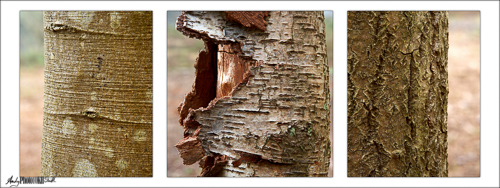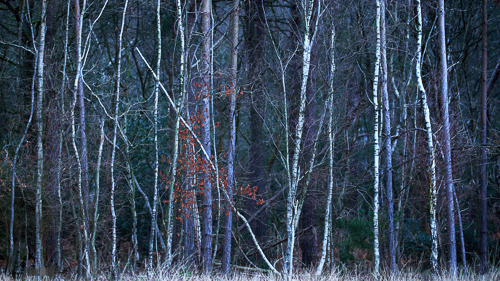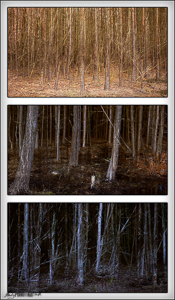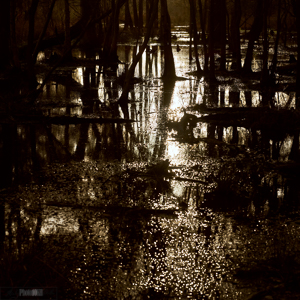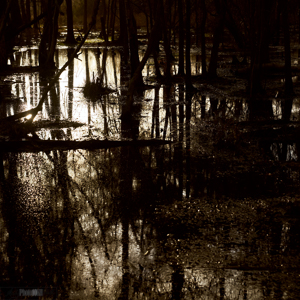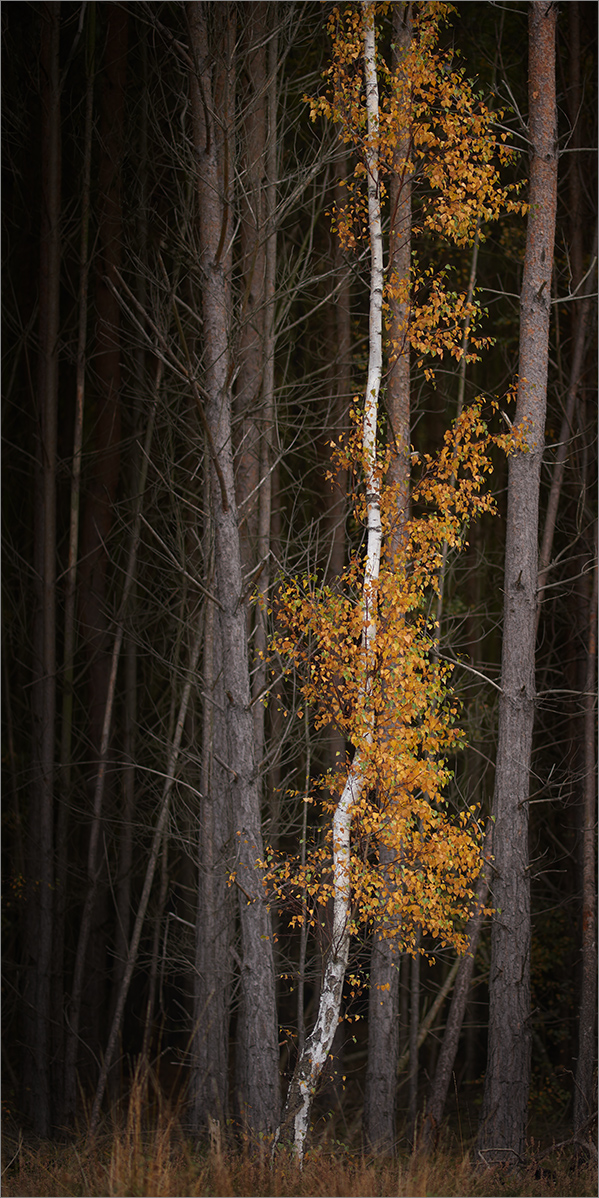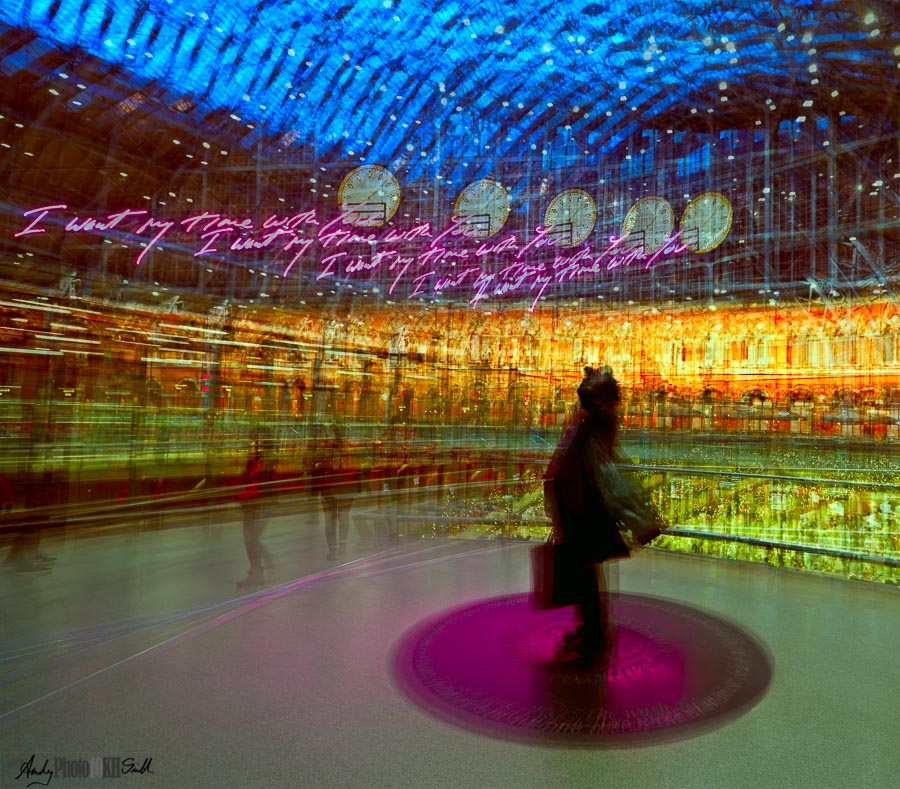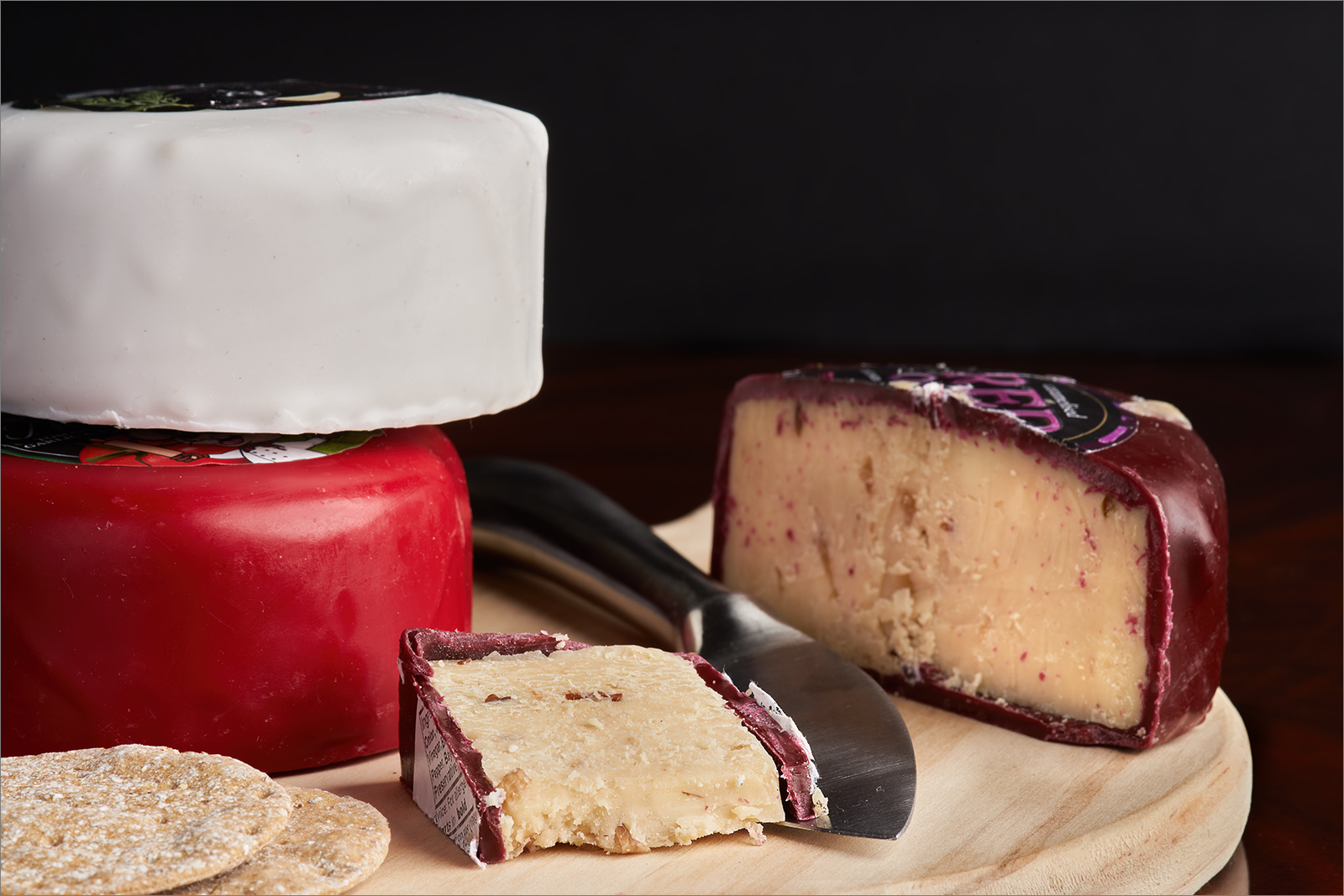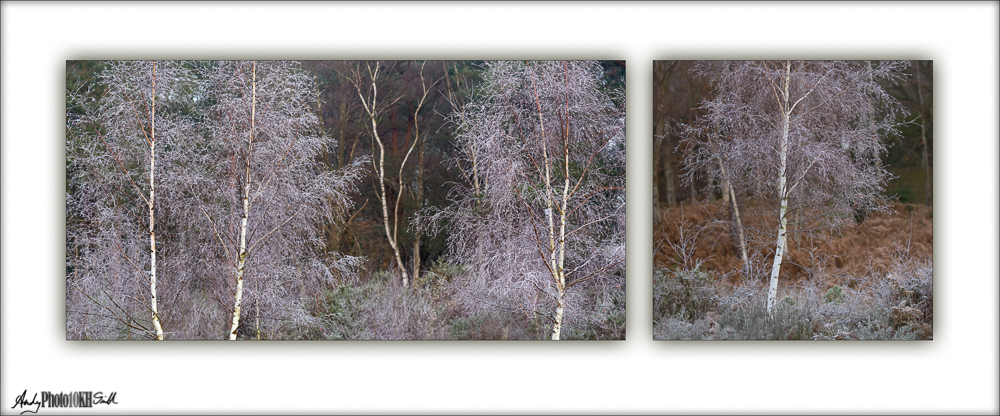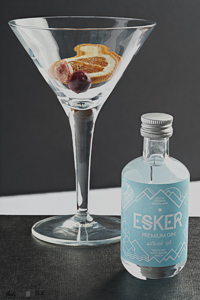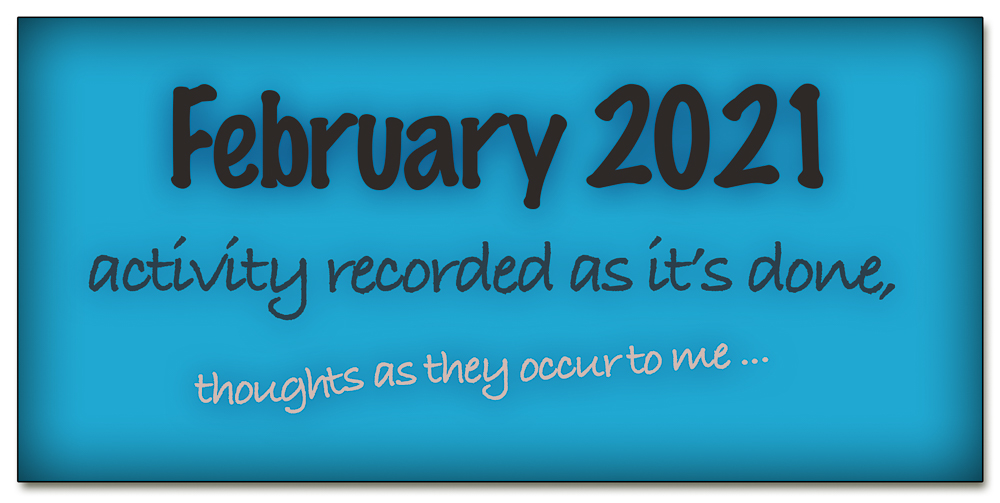
This journal records the day-to-day details of my apprenticeship, ten thousand hours learning fine art photography.
Hours 4,792 to 4,924
28th February
Hours 4,922 to 4,924
(1h) updating this journal and starting to collect images for, and drafting, a “Winter 2020/21” post.
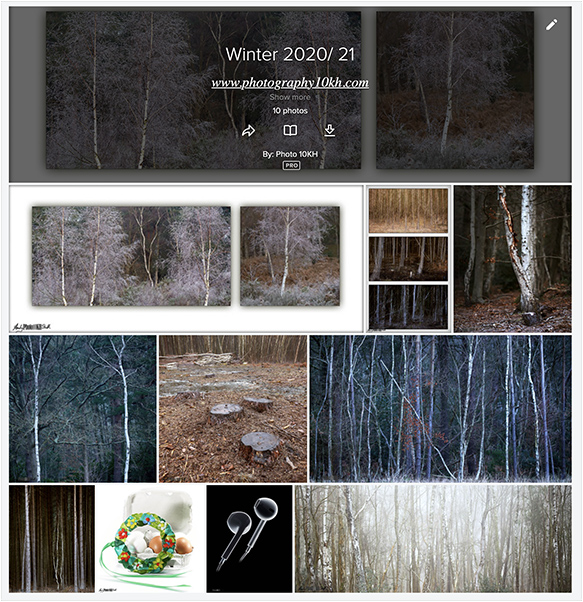
(1h) working on some of the recent images, including the development of a “Remove Green” Photoshop action that will enable me to add a consistent HSL adjustment layer to all images. Masking used so that adjustment applied only to the areas of the image where I want to emphasise the sense of destruction.
(1h) YouTube Art Documentary: “Zhang Daqian – the Picasso of the East“
- Spent the majority of his career reproducing the works of the ancient masters to the point where his work was indistinguishable from the original and often passed off as forgeries and apparently made $10m in today’s money selling them as originals.
- Created a splash painting style as a response to his own failing eyesight.
- Path to mastery was one of arduous effort, very much supporting the 10,000 hour theory.
27th February
Hour 4,921
An hour processing the last of Wednesday’s images. Also updating the following which could be a central panel image.
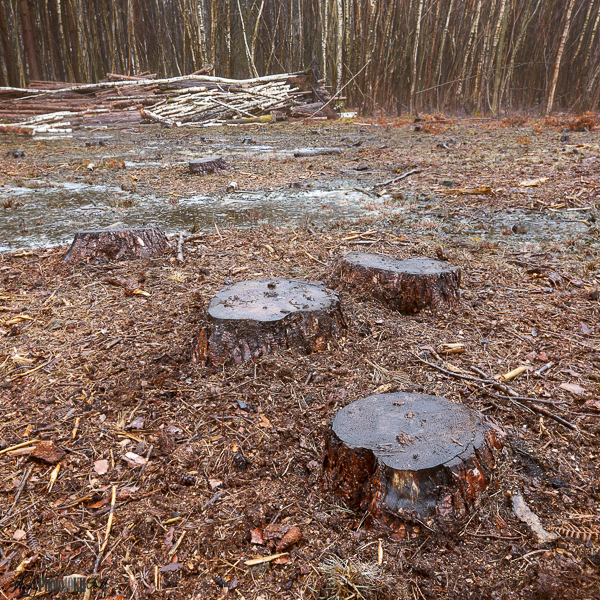
Key development in the above image is the removal of any green from the lower portion of the image. Green indicates new growth; its removal emphasises the sense of destruction.
26th February
Hours 4,918 to 4,920
Two hours sifting images for two Stoke Poges Photographic Club external competitions.
An hour processing some more of Wednesday’s images.
25th February
Hours 4,911 to 4,917
(1½h) editing some of yesterday’s images.
(½h) updating this journal.
(1½h) Karl Taylor Education – Karl shows us how we should have shot the Apple Earphone. Key elements as follows:
- Shoot flat onto white acrylic base lit from below
- Product sits on a little piece of black card shaped to just over the edges of the product and allow light to flow from the back
- Two back lights to balance right and left approximately – change positions to get the desired levels all round the product
- Create gloss look with a strip of card lying on the acrylic, curled round the product. This produces a nice reflection that makes the earphones look glossy
- Shoot through a thin window – increases contrast
- Shoot up the stalk of the earphone to produce the hero look
- Light the grills separately with a softbox – to be blended in photoshop
- Focus Stack
(1½h) Capture One Webinar – Landscape Edits. Key points:
- Add grid to ensure straightness of horizon and adjust by using Lens Correction Tab’s Rotation tool nudging with the up/ down arrow keys
- contrast slider provides and adjustment that is between and RGB and Luma curves adjustment – optimised for skin tone.
(2h) Amersham Photographic Society – Member’s Evening, Maggie James and Hilary Bailey discuss photographic distinctions. Specifically, LRPS and CPAGB.
24th February
Hours 4,905 to 4,910
(1h) shooting Stoke Common at sunrise.
(2h) processing the morning’s images
(1h) updating this journal.
(2h) Amersham Colour Group where the following of my images were discussed:
23rd February
Hours 4,900 to 4,904
(½h) updating this journal.
(½h) preparing images for the Colour Group tomorrow evening.
(1h) writing an intro for for the PIC group about my Stoke Common project.
(1h) YouTube, Menil Lecture “Roberta Bernstein: Jasper John’s Painting and drawing“
- Drawings and paintings are mutually supportive
(2h) SPPC at the Rosebowl external competition where we came 3rd out of 4 clubs.
Meanwhile at the club itself, I won the 3-of-a-kind competition with the following Triptych:

22nd February
Hours 4,893 to 4,899
(2h) shooting at Stoke Common, including a brief foray to the West Common for the first time.
(2h) Processing this morning’s images.
(1h) updating this journal including the analysis of the following more unusual image shot this morning.
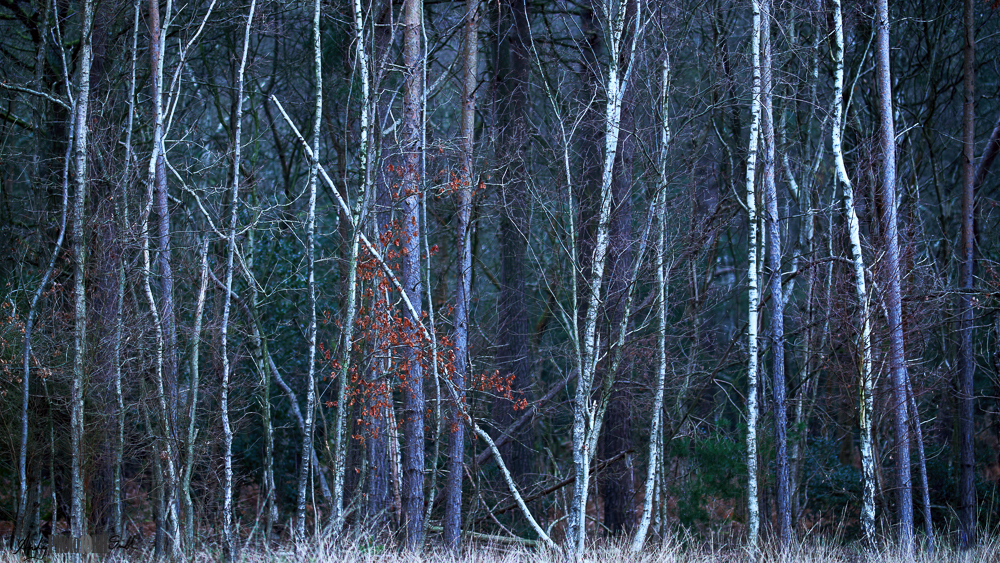
Eileen Rafferty’s pictorial analysis:
Subject: What is it of? Is the main actor clear? Are distracting elements eliminated or minimised?
The edge of the forest at Stoke Common; dense woodland suddenly cut to reveal the heart of the forest.
Form: What are the visual elements of the image? Line, shape, texture and colour. How do they support the subject?
Vertical lines with one tree fallen diagonally to break the pattern.
Brown leaves still on bush near the fallen tree.
Hint of grass/ fern at the base of the image.
Content: What is the picture about? Any story, meaning or symbolism?
Density and impenetrability, the barrier formed by the woodland at the edge of the clearing. Enigma and uncertainty of what lies within and beyond.
(2h) Amersham Photographic Society, Rosebowl Round 3.
21st February
Hours 4,888 to 4,892
(½h) updating this journal – mainly social media connections for images from the last few days.
(1½h) YouTube including:
- Recommended by Yin Wong “Top 30 Black and White photos“
- “Cy Twombly Fifty Days at Iliam” paintings that relate to Homer’s Iliad depicting the significant events of the final weeks of the Trojan war and the Greek siege of Troy. Gods and mortals.
- In 15 minutes “Great art explained: Picasso’s Guernica“
- Daniel Wretham: “Lake Pier“
- “In conversation with Ken Loach“
- Ted Forbes: “Texas Winter Storm Disaster“
(1h) finishing entering the Iris Salon, India.
(2h) Lens Master Circuit, Saudi Arabia.
20th February
Hours 4,883 to 4,887
(3h) processing more of yesterday’s images in Photoshop CC.
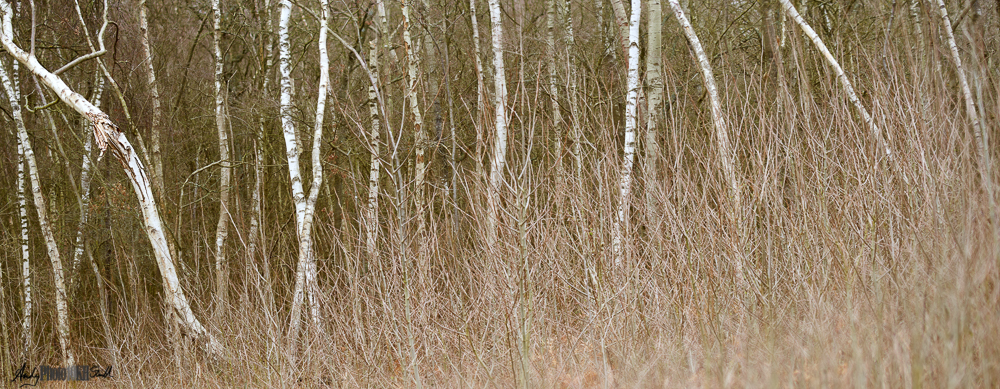
(1h) finishing entry to the Riedisheim Salon.
(1h) starting an entry to the Iris Salon in India – time spent selection new images and organising catalogue.
19th February
Hours 4,877 to 4,882
(1½h) shooting at Stoke Common, the first half exploring the North Common where the image below was shot. The other half of the time, on the main common.
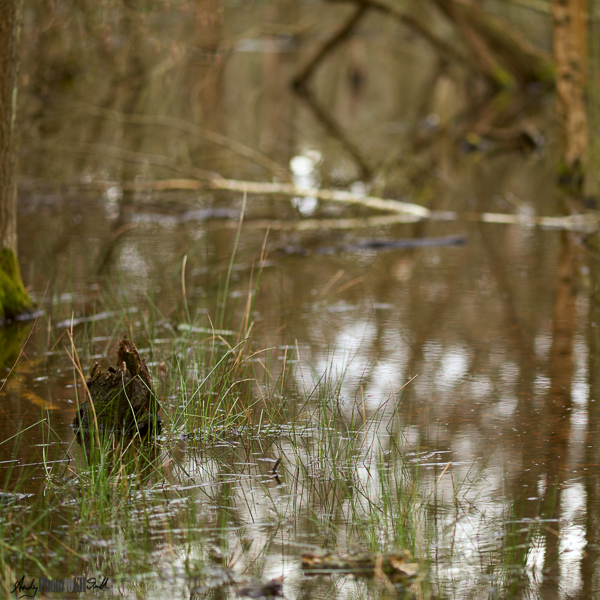
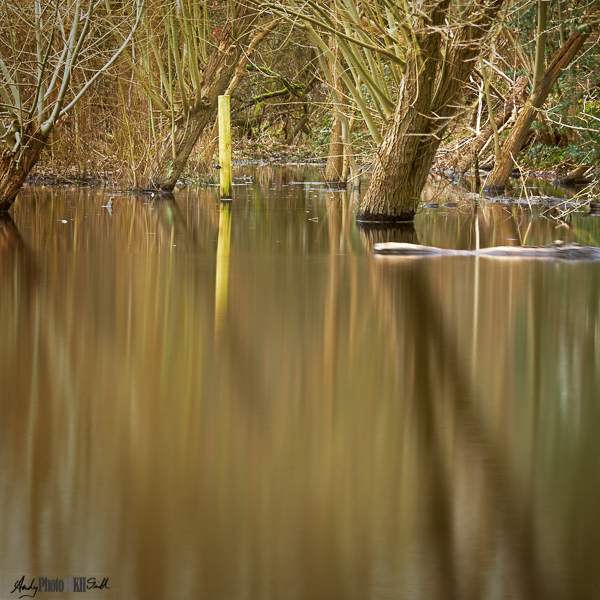
(½h) processing the morning’s images in Capture One.
(1½h) processing images shot yesterday for Thames Valley Heartbeat.
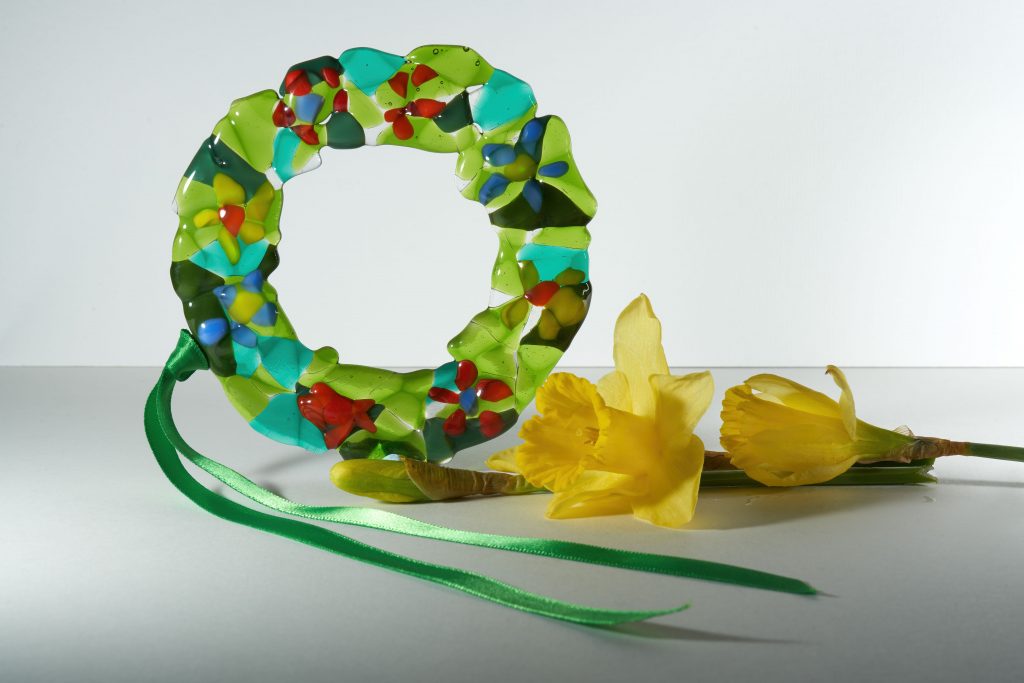
(1½h) YouTube:
- Sean Tucker: “How to Escape your Creative Ruts” key points:
- “Creativity is allowing yourself to make mistakes. Art is knowing what to keep.”
- “Never hope more than you work” – strikes a chord for me
- keep moving creatively – have sessions when you shoot intuitively, perhaps with camera on auto. New styles come out of our subconscious, always be alive to where the subconscious is leading.
- Capture One “5 Edits” top tips:
- Right click within the Crop tool, selects the aspect ratio
(1h) processing the following manually HDR blended image shot this morning. Required revising the use of luminosity masks, first learnt almost exactly a year ago 15th February 2020. Essentially, create a luminosity selection by <command><clicking> the RGB channel in the Channels Panel, then create a mask for the layer.
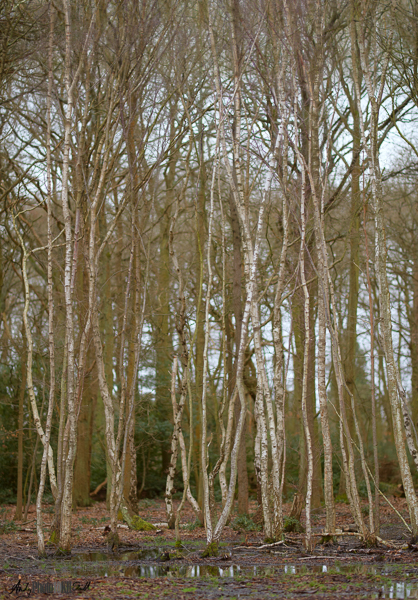
18th February
Hours 4,871 to 4,876
(1h) updating this journal, mainly with regard to the talk by Tony Worobeic yesterday evening at the RAC Club.
(½h) watching the second half of “Franco Zeffirelli: From Fighting Fascism To Directing Opera And Film” – film to watch is “Otello” or “Romeo & Juliet“.
(2h) Karl Taylor Education: review of the Working to a Brief – Challenge 4: Apple Earphones my image below:
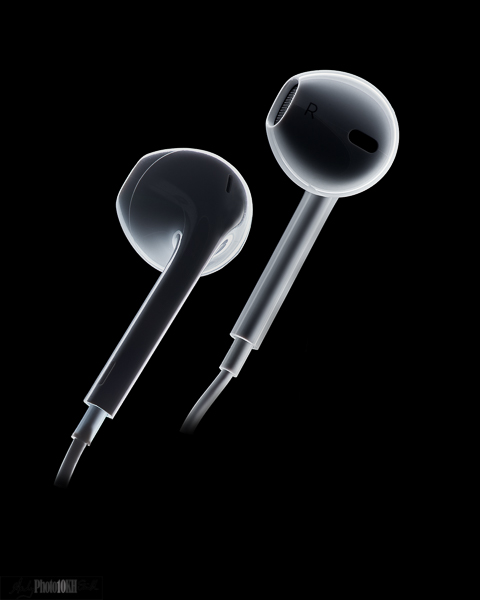
Karl’s comments:
- Ranking group 3 out of 6
- Good contrast, perhaps a little under exposed
- Starts to take on a sense of desirability.
What wasn’t said (explicitly):
- need to look up the stem to make the earphone look powerful and give the hero look
- cover the whole lighting setup with a black cloth to avoid the messy reflections I have
- need to preserve the hard light feel that helps describe the glossy nature of the product – have this on the left earphone but not the right
- graduated lighting helps describe the 3-d shape and form of the subject.
(½h) shooting some wreaths and flowers for the Thames Valley Heartbeat charity.
(2h) Amersham PIC group.
17th February
Hours 4,863 to 4,870
(½h) updating this journal.
(1h) processing the Stoke Common swamp images shot yesterday.
Eileen Rafferty’s pictorial analysis:
Subject: What is it of? Is the main actor clear? Are distracting elements eliminated or minimised?
Swamp at the end of the day. Dark and foreboding.
Form: What are the visual elements of the image? Line, shape, texture and colour. How do they support the subject?
The main visual element in both halves is the reflection of the setting sun on the water, leading the viewer through the images.
The pair work as a diptych as there is clearly one left and one right image.
The foreground of both images has a pattern of bokeh from bubbles or debris on the surface of the swamp water. This attracts the viewer’s attention and leads them into the image.
Content: What is the picture about? Any story, meaning or symbolism?
Sense of mystery.
(1h) processing the following image, again from yesterday, and analysing along with the above diptych.
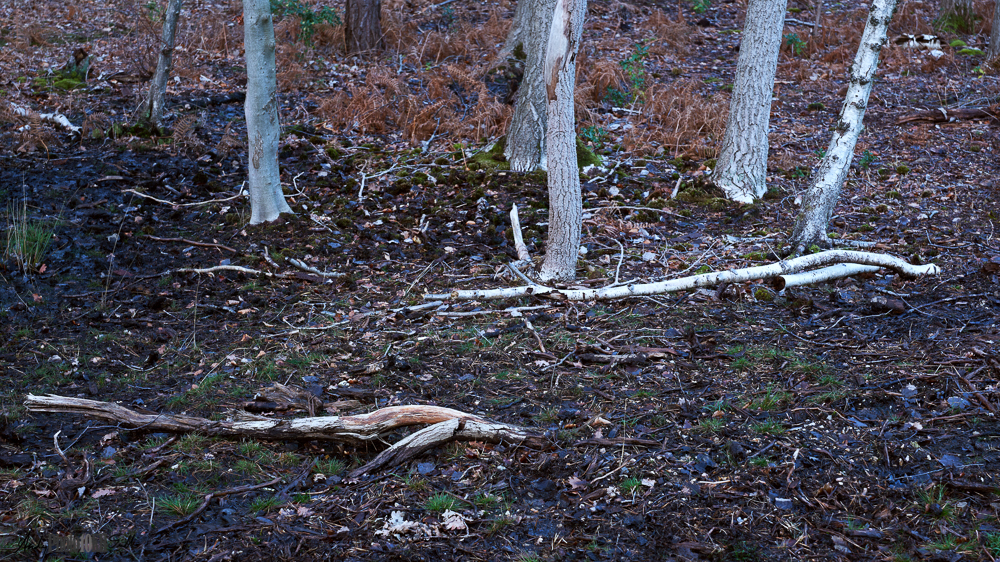
Eileen Rafferty’s pictorial analysis:
Subject: What is it of? Is the main actor clear? Are distracting elements eliminated or minimised?
Fallen branches at the edge of the forest; testament to the clearing process.
Form: What are the visual elements of the image? Line, shape, texture and colour. How do they support the subject?
Two horizontal fallen branches mirror each other and lead the viewer into the image where the untouched trees stand at the back.
Content: What is the picture about? Any story, meaning or symbolism?
The story is the brutal deforestation of the heathland, leaving just a perimeter of what was once dense forest.
(2h) shooting glass Easter wreaths with daffodils for the Thames Valley Heartbeat charity.
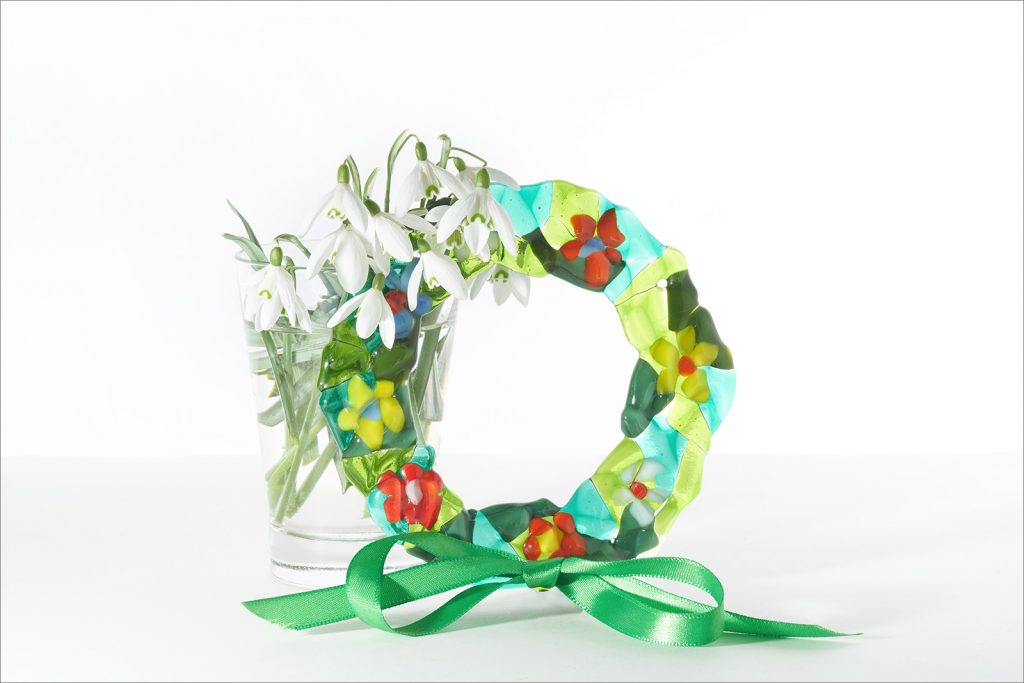
(1½h) processing the above images.
(2h) RAC Club zoom lecture “The Waters Edge” by Tony Worobeic. Lives near Wareham in Dorset, lots of shots similar to those taken by me. He also concentrates on getting a good sky, al a the Nigel Danson video of a couple of days ago. Top tips:
- Ideal time for shooting beaches is before dawn, c. 2 hours after high tide so that they are receding but still wet, and nobody has walked on them yet
- When shooting a landscape/ seascape in virtual darkness pre focus, lens on manual, so that the focus aligns with the the vertical part of the ¬ꝏ symbol. This will give, f/4 or above, a depth of focus from a few yards away all the way to infinity
- Ideal lighting on illuminated structures occurs when the artificially lit areas exactly match the luminosity of the sky. Usually occurs sometime just after sunset/ shortly before sunrise
- Atmospheric decoupling (as related to photography): surface of the earth warms the air above it during the day, as the sun shines on it, and cools it during the night. There are cross over points about 30-40 minutes before dawn and 40-45 minutes after sunset, when no head exchange occurs. This brief period is responsible for very calm still conditions, with few ripples on the surface of water
- Shooting waves, ¼ second shutter speed is a good starting point to show movement yet retain some detail. Experimentation required to find the ideal for any particular shot
- When shooting intimate landscapes in rock pools take a shoe brush to clear the sand off the rock subject
- Get a good sky – see Nigel Danson video of 15th February
Top locations include:
- Burton Bradstock – Dorset, Broadchurch cliffs, shoot from the quay
- Kilve – Somerset, rocks on beach
- Spittal – Northumberland, beac, cliffs and lots of opportunity shot shooting in rock pools
- West Wittering – West Sussex, near Chichester Harbour, sand dunes and beach huts
- Osea -Essex – posh beach huts which are surrounded by water at high tide
- Spurn Head, near Hull, remote place with access by foot only. See video and notes of 17th September 2020.
16th February
Hours 4,858 to 4,862
(½h) rewatching and taking notes on the Nigel Danson “Sky Photography” YouTube of yesterday.
(½h) watching the Perspectives YouTube: “Franco Zeffirelli: From Fighting Fascism To Directing Opera And Film“. Semi-autobiography was “Tea with Mussolini”. Some allegations of sexual harassment, including by the director Bruce Robinson, during the filming of Romeo & Juliet. Robinson later used Zeffirelli as the basis of the character Uncle Monte in the film Withnail and I. Zeffirelli himself claims to have been abused by a priest as a child. Source: Wikipedia.
(1h) shooting at Stoke Common later in the day (4-5:30pm).
(1h) processing the above images, including creating the following vertical Triptych of woodland multiple exposures, which incorporated the image shot yesterday.
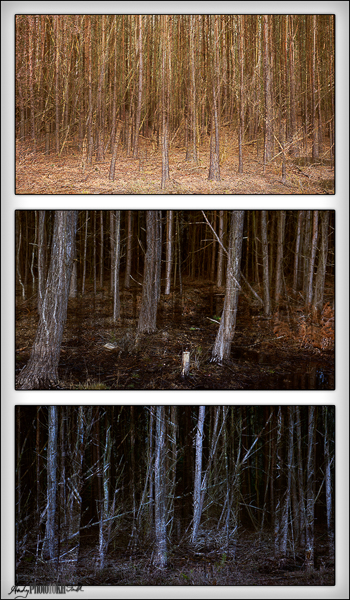
(2h) Stoke Poges Photography Club zoom talk by Polina Plotnikova on “LensBaby lenses”. Superb images often presented as Triptychs.
15th February
Hours 4,851 to 4,857
(2h) shooting drizzle at Stoke Common, early/ mid-morning.
(2h) processing the morning’s images, including the following multiple exposures
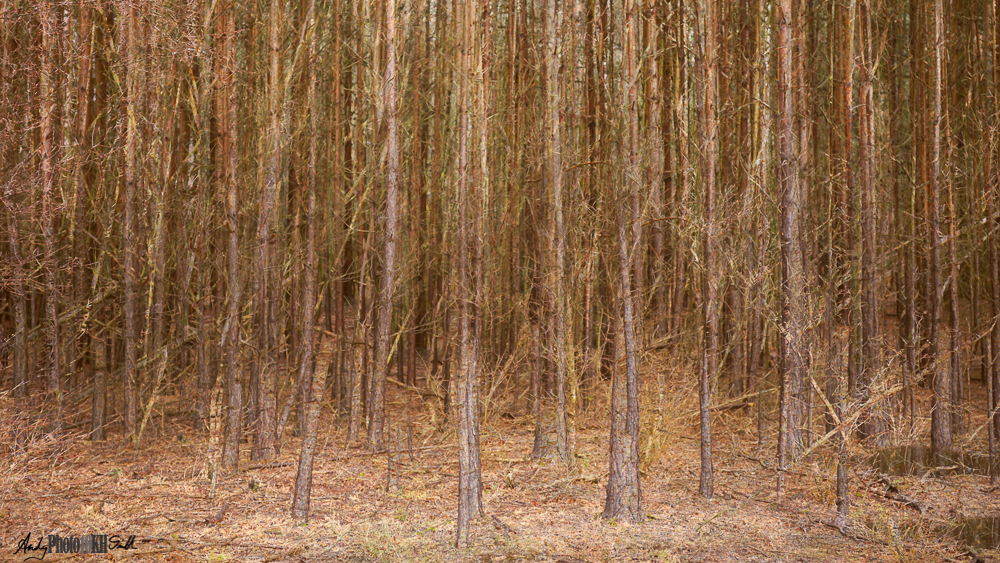
(½h) Nigel Danson’s YouTube: “What photographers forget about the sky“
- shapes & Patterns – how these are interpreted and incorporated in the image. Find elements in the sky that match or mirror elements in the foreground
- wait for changes – watch and predict how the mood of the sky is changing
- use uninteresting sky well – negative space to add weight to foreground elements – consider pairs of blank areas, e.g., sky & sea, balancing around a strong subject. In the worst case crop it out
- make the sky the star – a good sky can be 80-90% of the image for highly dramatic images
- experiment with long exposure
- ensure there’s space around clouds – don’t cut off clouds, that are individual compositional elements, at the side of the frame. Give it room to breath
- hold the viewer in the image – darker clouds at the top of the frame key the eye in the picture. Can be achieved in post.
(½h) updating this journal
(2h) Amersham Photographic Society – PDI competition (judge: Colin Mill):
14th February
Hour 4,850
(½h) shooting the following Glass Easter Wreath with vase, into which the graphics designer of the Thames Valley Heartbeat charity is going to insert some daffodils.
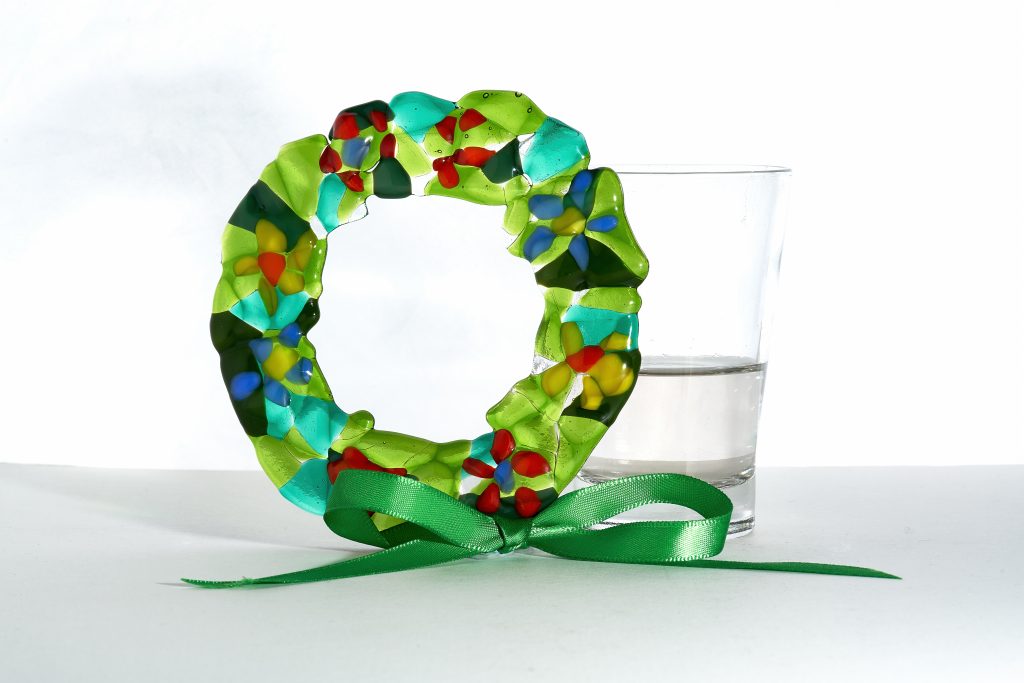
(½h) reviewing feedback from Vic Attfield on the recent images for my A panel, generally: “most of the images look as thought they were taken hurriedly and are individually not interesting enough for an ARPS panel”.
13th February
Hours 4,848 to 4,849
(2h) shooting Easter Wreaths next to spring flowers for the Thames Valley Heartbeat charity.
12th February
Hours 4,842 to 4,847
(1h) shooting Stoke Common, no more snow but very cold.
(3h) final edits to the Apple Earphone image shot yesterday for the Karl Taylor Challenge.
(½h) selecting and processing images for Monday’s competition at the Amersham Photographic Society.
(1½h) processing today’s images, adding to a small collection of new images for review by Vic Attfield.
11th February
Hours 4,837 to 4,841
(2h) reshooting the following Apple Earphone shot for the Karl Taylor Education Challenge #4.

(1h) focus stacking and otherwise processing the above.
(2h) Amersham Mono Group where the following of my images were discussed.
| Image | ….. | Comments |
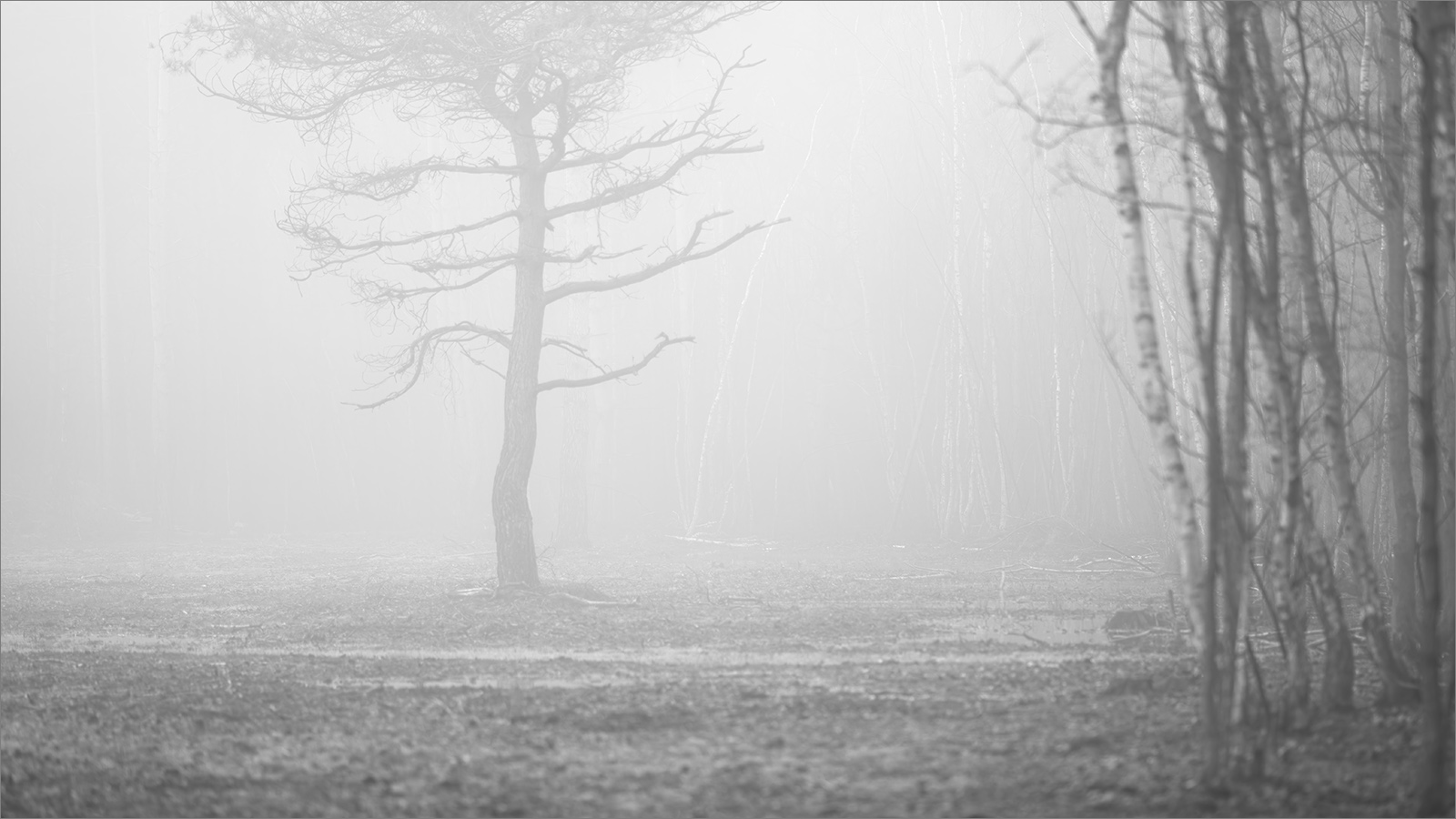 | “Designated Survivor” Trees to the right distract from the single Oak in mist. Two elements and the eye tends to bounce. | |
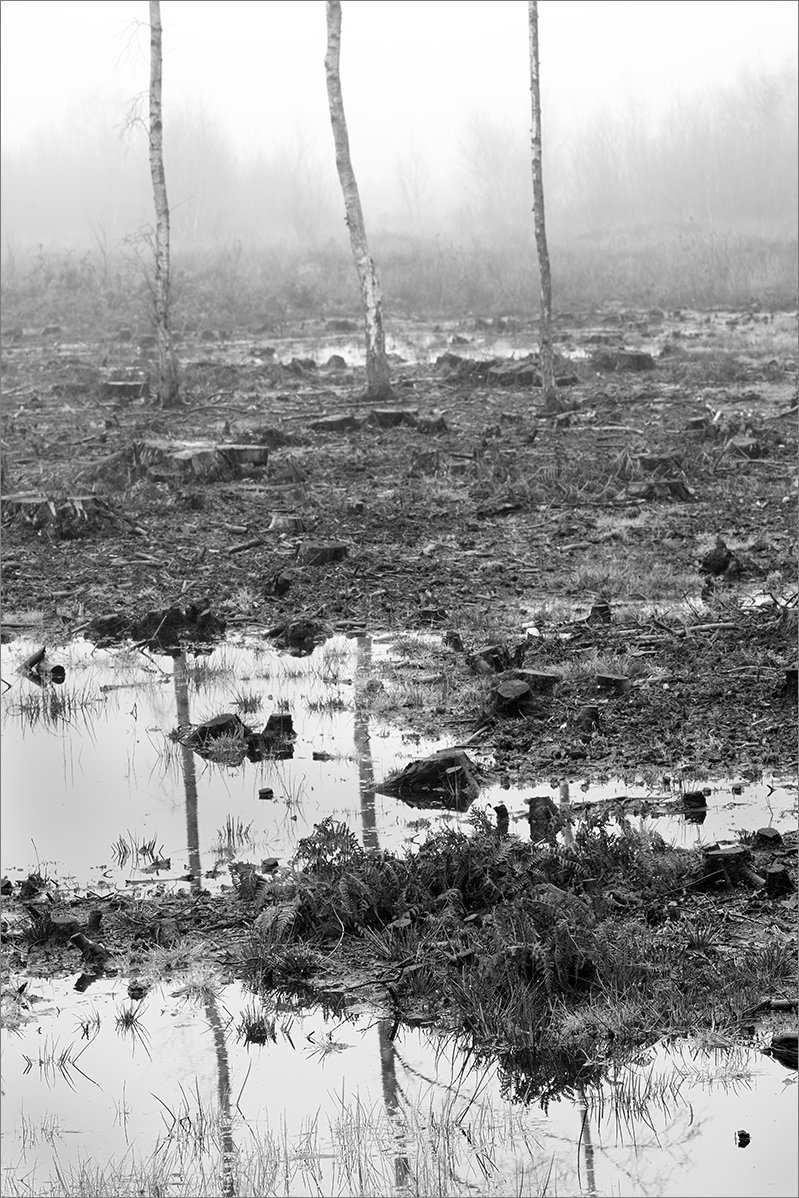 | “Three Remaining Birch” Reminiscent of World War I trenches. Probably a good thing. Some discussion about the trees not being straight. | |
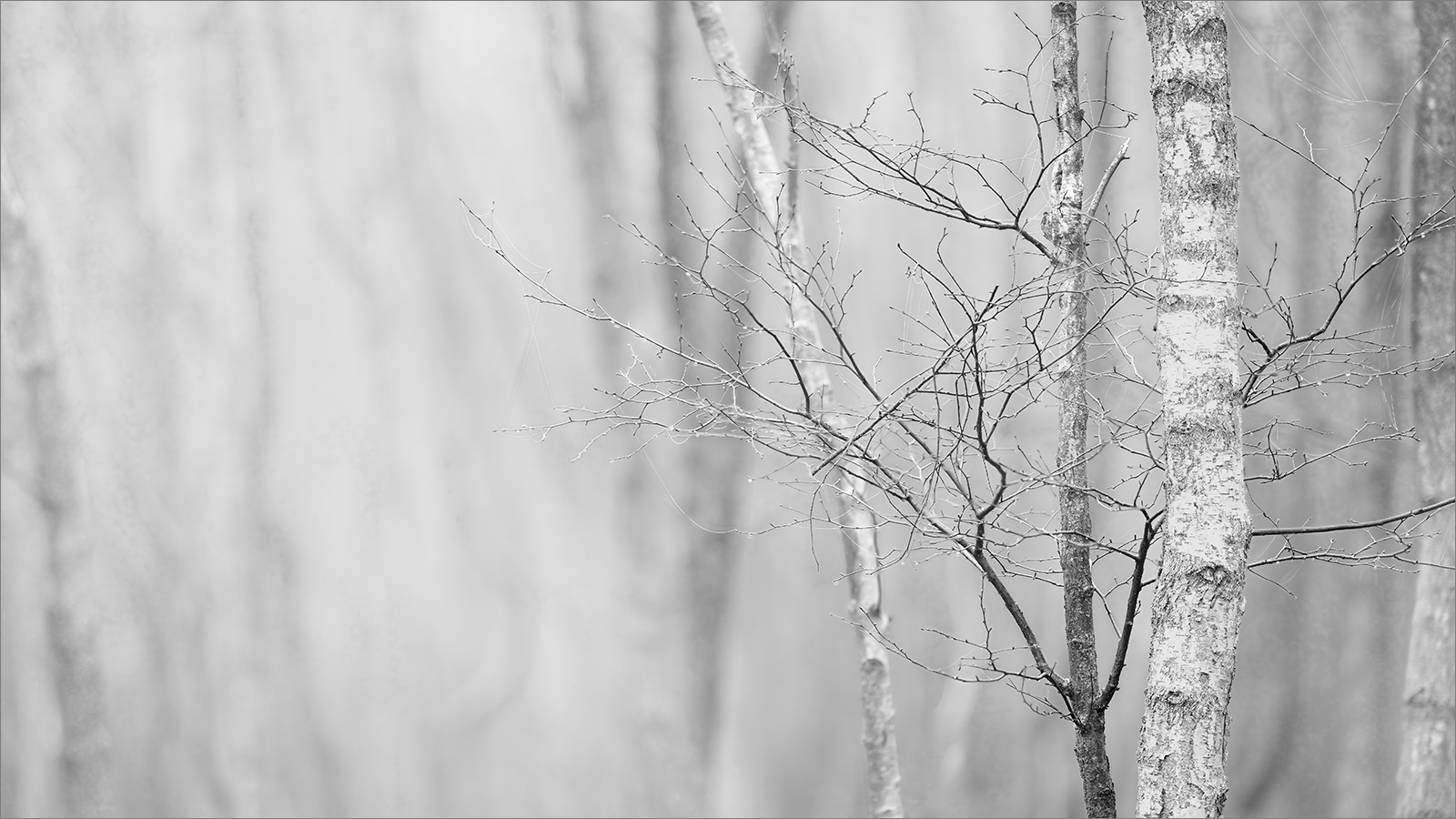 | “Single Rowan in Silver Birch” Best of the 3 as an individual image, but does not work as part of the set. |
10th February
Hours 4,831 to 4,836
(2h) first light shooting at Stoke Common – clear, cold morning with snow & ice on the ground. Took my 24-70mm zoom in addition to the 135mm, usually used, which was on the camera. Bit of a pain carry to lenses and changing in the field was awkward but I did use both.
(2h) processing this morning’s pictures.
(2h) Zoom lecture from the RAC Club: Valda Bailey & Doug Chinnery “The Distraction of Abstraction”
Major influence for both artists was Chris Friel. Very prolific abstract photographer.
“Drawing is Exploring not Explaining”
Valda Bailey quoting her art teacher
- Live with your imperfections. The slight mistakes in images add life and authenticity
- Don’t make the technique too dominant
- Composition is about balancing colour and form within the rectangle
In-camera multiple exposure allows for instant feedback.
Use colour associations to support the story or intended mood of the picture. Do this in Photoshop by picking one colour using the Selective Colour tool and adjusting the hue/saturation/luminance.
“Abstraction allows man to see with his mind what he cannot see physically with his eyes…. Abstract art enables the artist to perceive beyond the tangible, to extract the infinite out of the finite. It is the emancipation of the mind. It is an exploration into unknown areas.”
Arshile Gorky
Abstraction allows more room for the viewer to think around the image.
9th February
Hours 4,825 to 4,830
(½h) working on the following image and similar.
(½h) updating this journal
(1h) speaking with my friend and mentor, Yin Wong.
(1h) creating mono versions of some of the woodland images shot recently, with a view to considering doing my A panel in Black & White.
(1h) discovering, through YouTube, Gilbert & George; who, I’m embarrassed to say, I had never previously heard of:
- “The Great Exhibition – Introduction” at Modern Museet in Stockholm – always two men, one artist creating controversial art for over 5 decades
- “Tea with Julia: Interview in their Studio“
(2h) Stoke Poges Photographic Club – Gavin Howey video and discussion on smoke. Great tips for shooting smoke from incense sticks/ cones:
- Hand hold camera
- Set to autofocus
- Flash from the side
- Flag to ensure than no light goes on a black background
- Change the colours in photoshop using the gradient tool with some funky colours, and set the blend mode to Colour
- To achieve a white background, shoot with a black background and invert in photoshop.
8th February
Hours 4,819 to 4,824
(1½h) first light shooting in the snow at Stoke Common.
(1½h) processing the above images.
(1h) YouTube from Simon Baxter:
- “Winter Photography in a Private Woodland“
- “How I make Photos with Meaning” – more help in a general sense from last month’s course with the RPS.
- Know what trees look good at what time of year – know what you hope to achieve, plan before you go out
- Knowledge of specific tree types help you interpret a scene and create an analogy (“The hidden life of trees”)
- “Woodland Photography – A Poetic Approach“
(2h) at the Amersham Photographic Society – lecture by Ria Mishaal.
7th February
Hour 4,817 to 4,818
(½h) shooting the following of Harley.
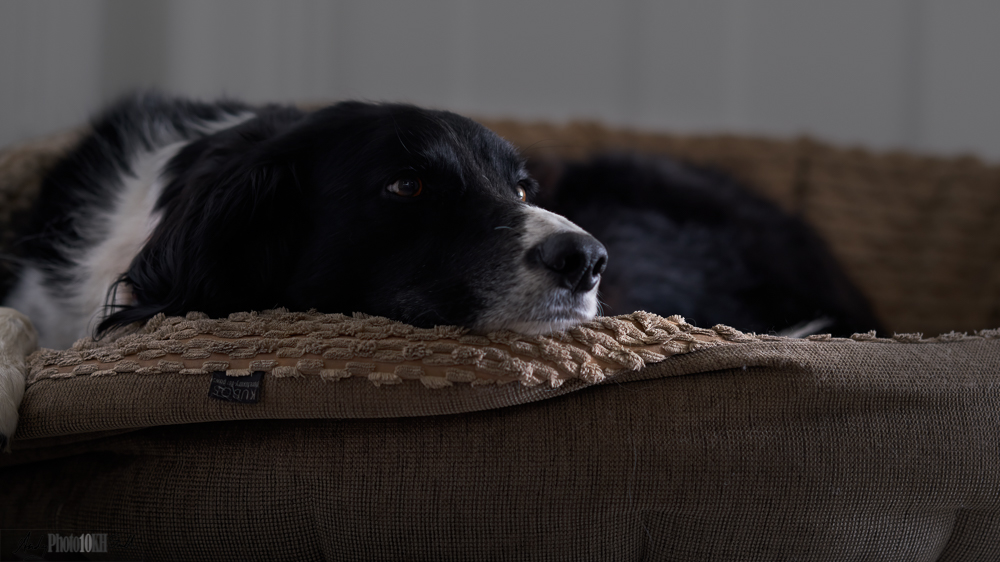
(½h) processing the above.
(1h) YouTube:
- “The Story and Works of Japanese Photographer Nobuyoshi Araki” probably the most prolific Japanese photographer of the 20th century. Unlike Moriyama Daido, has a lot of explicit nude work which was banned in Japan
- Daniel Wretham: “Shooting Winter Scenes one the River Stour“. White Mill bridge – National trust.
6th February
Hours 4,815 to 4,816
(2h) working on completing the admin for my AFIAP application.
5th February
Hours 4,810 to 4,814
(2h) processing the images shot at Stoke Common yesterday.
(1h) detailed conversation with Vic Attfield about my potential ARPS panel and analysing the mini-panel I sent him and the 5 mono images I sent him today.

Suggested layout for the panel:
- Top row: 5 high key winter images
- Middle: 5 detail images
- Bottom: 5 low key images – like 1, 3 and 5 from the mini panel above.
(1h) implementing the changes to my images that Vic suggested.
(½h) updating this journal.
(½h) social media.
4th February
Hours 4,805 to 4,809
(1½h) shooting Stoke Common 8am – cold and foggy, great for photography.
(½h) updating this journal.
(1h) YouTube: “Thomas Heaton in conversation with Nick Carver“
(2h) Amersham Beyond Group. New Challenge #21: “Movement”.
3rd February
Hours 4,803 to 4,804
(2h) creating contact sheet and other documentation for my AFIAP submission.
2nd February
Hours 4,799 to 4,802
(1h) zoom with Yin Wong, shooting an ARPS panel
(1h) YouTube:
- Perspective: “Discovering Buñuel: Surrealism And Controversy” Salvador Dali’s collaborator in film making.
- Ted Forbes: “What is Really Important?“
(2h) Stoke Poges Photography Club – “Neon Signs” and Open competition.
1st February
Hours 4,792 to 4,798
(1h) updating this journal including all the end of year admin.
(½h) finishing submission to the French Riedisheim FIAP salon which requires updating some of my Photoshop actions to meet the requirement for higher definition PDIs.
(1h) YouTube:
- Perspective: “Salvador Dali: Surrealism’s Most Eccentric Man“
- Daniel Wretham: “ Houns Tout – Winter Sunrise“
- Nigel Danson: “Composition Critique“
(2h) Karl Taylor – Live Photography Workshop – “Natural Decay Still Life Retouch.”
- Warm Highlights, Cool shadows done with a “Cross-curves” technique using the colour channels in the curves tool. Not entirely dissimilar to what I do using the colour balance tool
- Two stage sharpening:
- Adjust Texture, Clarity & Dehaze in the Camera RAW filter; adjust negatively for a softening effect
- Achieve a “halo blur” in some areas by copying highlight areas to a separate area, blurring, use an attached curves layer to increase highlights, apply the lighten colour blend mode to the copied layer, and decrease the opacity to taste.
Not entirely different to the Orton effect.
(½h) social media updating the Instagram feed and planning tomorrow.
(2h) Amersham Photographic Society – Members Evening.
